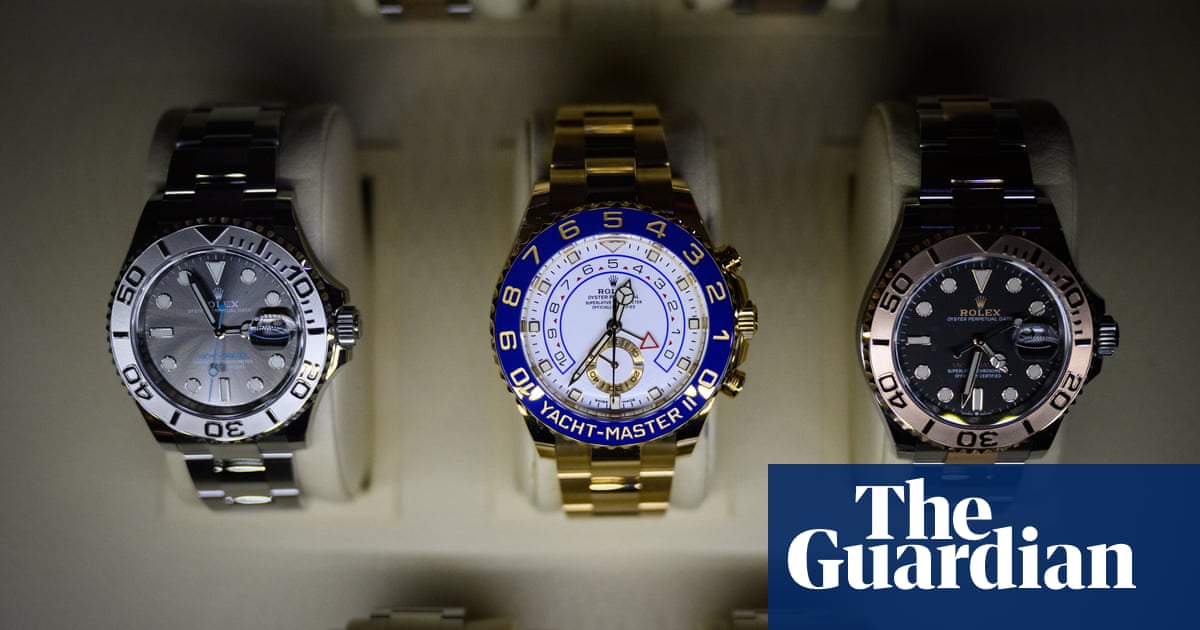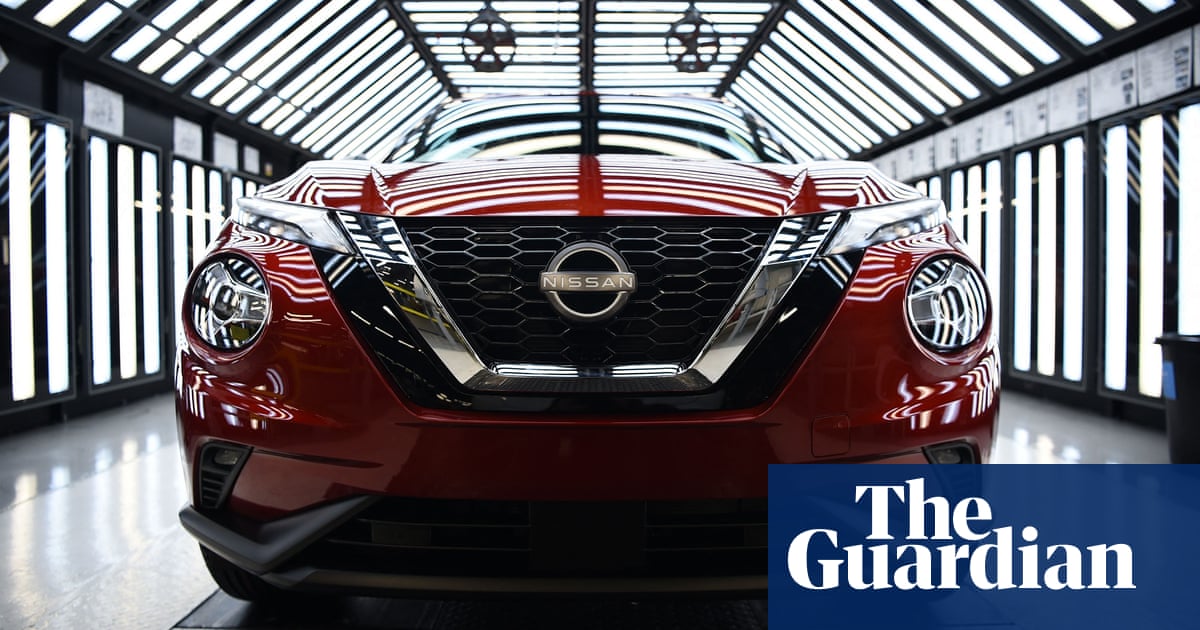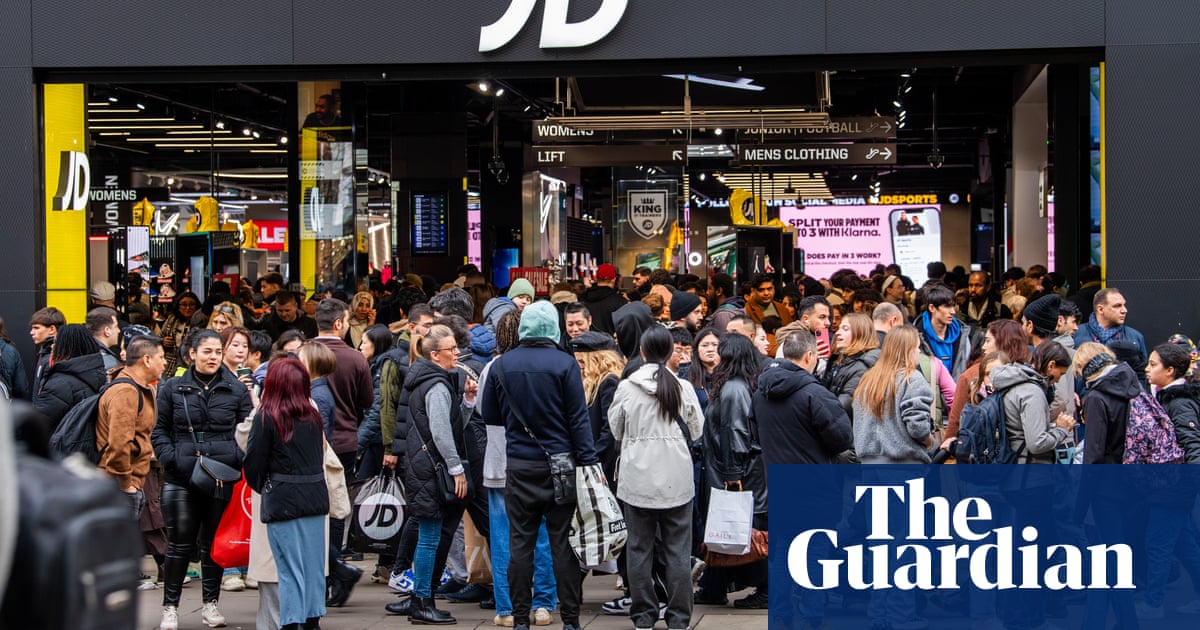
The share price of Watches of Switzerland has dived by more than a third in one day – wiping £516m off its value – as the UK’s biggest seller of Rolex and Omega timepieces became the latest luxury retailer to experience a reining in of spending by aspirational shoppers.
The plunge on Thursday came after the company said full-year revenues would be £100m below expectations because well-heeled customers were switching their purchasing power to other categories such as fashion, beauty, hospitality and travel.
Watches of Switzerland’s poor trading figures echo a series of warnings by UK-listed luxury players in recent weeks including Burberry and Mulberry. Before Christmas, Frasers Group, the owner of the Flannels designer streetwear chain and House of Fraser department stores, also said high-end shoppers were holding back.
The warnings appear to mark the end of a boom in luxury spending after the pandemic lockdowns, when the better off splashed the cash they had saved up as holidays, dining out and events were all put on hold.
The downbeat 2023 festive season capped a year in which growth in luxury spending slowed to less than 5%, down from the double-digit rates of the previous two years, according to analysts at the US consultancy firm Bain. Within that category luxury goods lost out to spending on high-end hospitality, cruises, cars and yachts.
“While such growth normalisation was predictable, not every luxury company was able to anticipate and successfully navigate this trend,” according to the latest Bain-Altagamma study of the global luxury goods market, which was published this week.
Moreover, with savings dwindling, property markets flagging and higher interest rates across the world, even the better off are looking at trimming their outgoings. Ultra-high net worth individuals, people with a fortune of at least $30m (£24m), continue to spend unabated on the most luxurious experiences and items. However, more aspirational spenders – who might spend up to £2,000 on a watch against £10,000 – have had to call time or make careful choices.
Just as their budgets were coming under pressure, the price of luxury goods such as handbags and coats have risen dramatically in recent years, reducing the spending power of those wanting an occasional pricey treat. The price of Chanel’s 2.55 handbag has risen from $5,800 in 2020 to $10,200 and Prada’s Galleria bag is up from $2,750 in 2021 to $4,300, for example.
“Industrywide, the pricing has gotten truly absurd,” the influencer Bryan Yambao noted in an Instagram post in November.
With spending power squeezed, shoppers are focusing on must-have brands with maximum bragging power.
Luca Solca, a global luxury goods analyst at the research firm Bernstein, said: “I think we are seeing continuing polarisation between winners and losers. Brands that stand at the top of their respective categories – like Cartier and Van Cleef [& Arpels] in jewellery – continue to rise. Brands that are ranking lower – like Burberry and Mulberry against the likes of Hermès and Louis Vuitton – are under pressure.”
Solca added that competition between brands was becoming “more intense, with higher and higher investments and brand support costs” that tended to favour larger groups with more resources.
Other factors are at play. Brands had hoped that Chinese consumers, who were forced to stay at home for longer periods than those elsewhere during the pandemic, would be flexing their passports for an international spending spree. But inflation in the cost of travel and uncertain economic times in China have put a dampener on this group’s holidaying plans.
UK-based brands have blamed poor sales in Britain on the government’s post-Brexit end to VAT tax breaks for tourists in 2021. Outside of the ultra-rich, US or Asian shoppers looking for a handbag or a luxury watch are more likely to allocate more of their budget to boutiques in Paris or Milan rather than London as a result.
UK shoppers, meanwhile, are affected by concerns about political uncertainty in an election year and problems in the housing market.
Burberry, Mulberry and Watches of Switzerland are also suffering from their own particular problems, according to analysts. Burberry brought in a new boss and replaced the cult fashion designer Riccardo Tisci as creative head with the less splashy Daniel Lee in 2022. The jury is still out on whether Lee’s creations have such strong appeal.
Mulberry continued to increase sales internationally but blamed its lower profits on higher costs, with a plethora of projects on the go.
Analysts at the investment bank Peel Hunt also raised specific concerns about Watches of Switzerland, which told the City that Rolex, the retailer’s most important brand, was not giving it enough supplies of the most expensive timepieces, for which long waiting lists showed demand remained strong.
Solca said: “I think that much of the weakness we are seeing at Burberry and Mulberry is company specific. Don’t get me wrong, luxury demand growth is moderating. But it is not falling off a cliff.”
Analysts at Bain are predicting that the luxury market will continue to grow – by up to 4% in 2024.
Nick Steyn at the consultancy Anew said: “The concept of luxury is changing and it will be more experiential and less about overt branding.”












